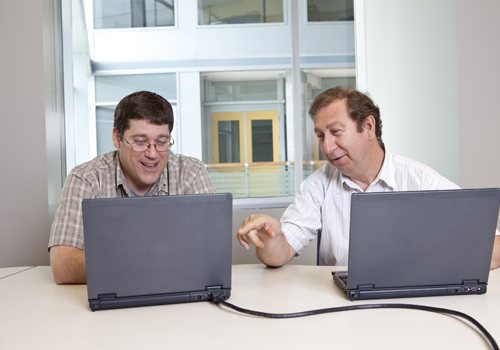Ways Sex Ed eLearning Protects Our Youngsters
For a nation with increasingly prevalent sexual overtones permeating multiple facets of its society, the United States is surprisingly "meh" when it comes to sexual education. According to the figures provided by the National Conference of State Legislatures (NCSL) [1]:
- 24 states and the District of Columbia require that public schools teach sex education. Out of these, only 21 mandate both sex education and HIV education.
- Altogether, 33 states and the District of Columbia require that students receive instruction about HIV/AIDS.
- Alarmingly, only 20 states require that sex and/or HIV education must be medically, factually, or technically accurate.
- A total of 35 states and the District of Columbia allow parents to opt-out on behalf of their children.
While parents have every right to decide and participate in how their children receive sexual education, a lack of sexual education in schools could be harming our youth instead of helping them. Furthermore, the astonishing rise of connectivity means that if children aren’t getting their sexual education from trusted sources such as parents and teachers, they’ll likely get it elsewhere — whether their parents like it or not.
Though sexuality is still a taboo topic in government and some parts of society, pop culture is riddled with sexual undertones and overtones. Kids are like sponges, and they are forming their own sexual framework and identity, either actively or passively, using the sources around them.
These sources might include songs on the radio, videos on Youtube, or even their own peers via social media. Because there are no quality controls checking many of these sources for accuracy, this "learning via osmosis" can lead to the spread of sexual misinformation, disease, and even harmful sexual self-identity.
In an infographic post on the relationship between social media and well-being [2], Rutgers Online mentions a study which found that "teen girls had body image issues after spending a large amount of time looking at Facebook photos".
Hyper-sexualization in society will breed hyper-sexualized participants in that society, and the harms that are presented via normalized sexual culture are only exacerbated by restricted access to sexual education. However, there is good news.
While it is true that, traditionally, the internet has been seen as a place where sexual misinformation thrives and harmful sexual paradigms propagate, a new class of educators is trying to change that stigma. By presenting accurate and accessible information combined with the latest advancements in technology, sex education advocates across the country are using eLearning to promote healthy sexual attitudes and pedagogy.
Enter: Sex Ed eLearning
Elisabeth Sherman, writing for Bright [3], mentions that while sex ed initiatives in the US are already bad, sex ed advocates are worried that they’re going to get worse. She covers a couple of online sex ed tools that aim to fight back against abstinence-only education and sexual ignorance, some of which were created "in direct response to the current administration’s restrictive views on sexual health", in Sherman’s words.
One example that stands out is "AMAZE", a sex education video series for children ages 10 to 14 that covers traditional topics like puberty and masturbation, as well as more progressive topics like gender identity and the importance of consent.
AMAZE puts particular care and priority on promoting the idea of consent, sometimes in ways that buck norms and might even seem controversial. One lesson plan aimed at kindergartners provides a "consent form" of sorts that kids can give to their parents, basically saying if the child asks not to be hugged or touched, the parents would respect that. Sherman quotes an email from Debra Hauser, president of the AMAZE partner Advocates for Youth:
"I thought we were going to get killed for that. But [the curriculum specialist] turned to me and said, 'This is the beginning of bodily autonomy'. Every time you say, 'Sit on Santa’s lap', or 'Go hug Grandma', you’re teaching them that their body isn’t their own. That’s one of the more controversial ideas, but "it’s the beginning of teaching girls that their bodies are theirs", Hauser said.
Some sex ed advocates have even taken things a step further, shucking online video series for interactive sex ed video games.
If either of those terms or their combination ("interactive sexual education" or "sex ed video games") causes discomfort or sounds awkward, that’s normal. Many people never received interactive sex ed. and those who remember a similar scene, one played out for comedy in movies and TV all the time.
"Putting a condom on a banana, that’s like a stereotype of sex education, right? But that’s what everyone remembers", says Nina Freeman creator of the acclaimed 2014 game how do you Do It? [4]. "Because it’s the thing that you’re actually doing. You’re basically performing the act of putting a condom on a penis — it's a performative thing".
Freeman is quoted in Kellen Beck’s article for Mashable titled "Sex Ed Has a Need for Interactivity. Video Games Can Help" [5]. Beck follows up by saying that, essentially, if the act of putting a condom on a banana can be equated to and translated as a game-like experience, it could be a very effective way of conveying information.
Unfortunately, this wave of newfound ventures in Sex Ed eLearning is also highlighting that there are a number of drawbacks to online systems of education. Claire Kueffner, writing for Lift Louisiana [6], points to lack of regulation and barriers to entry as elements of eLearning Sex Ed that could use revision.
"...the internet isn’t a highly regulated platform. Anyone can post anything, and as a result, young people may learn even more inaccurate information by exploring the Internet", writes Kueffner. "Additionally, if children are starting from either inaccurate or no sex ed., it is likely that they will not even know what to search for in terms of filling in knowledge gaps or finding out the truth about sex and sexuality. Between not knowing what to be searching for, and having no clear basis by which to differentiate true information from false, online systems of education could potentially leave students even more confused or lost."
Protecting Our Most Vulnerable Population
The truth is that innovation in sexual education is sorely needed and that abstinence-only education doesn’t work, leaving behind and ignoring the plight of almost half of all high school students. The NCSL calls upon a 2011 Centers for Disease Control and Prevention (CDC) survey, which indicates that [1]:
- 47% of all high-school students say they have had sex.
- 15% of high-school students have had sex with four or more partners during their lifetime.
- Among students who had sex in the three months prior to the survey, 60% reported condom use and 23% reported birth control pill use during their last sexual encounter.
While proponents of abstinence-only might prop up their argument by pointing to record lows in teen pregnancies [7], this would ignore many of the other harms that arise from a lack of proper sexual education, such as record highs in sexually transmitted diseases and infections [8].
"One of the main reasons STDs are so common is because carriers are not aware that they are infected. Most people don’t have a lot of knowledge about STDs and their associated symptoms", write the experts at PrioritySTD [9].
Historically we’ve seen that a lack of education can fuel epidemics and pandemics. HIV/AIDS, for example, has become a priority in sexual education for just that very reason. According to Bradley University’s analysis of why certain populations are at higher risk of HIV/AIDS [10]:
- 38 million individuals are living with HIV/AIDS worldwide.
- Last year, roughly 1 million people died from illnesses related to the disease.
- Certain populations are and have historically been disproportionately affected by the disease, such as ethnic and sexual minorities.
- The driving forces behind this seem to be lack of education and access to care.
Duquesne University’s resources also confirm that a lack of health literacy, especially when coupled with a lack of access to care, tends to more heavily affect and cripple vulnerable populations [11]. Tragically, in the case of sexual health literacy, this vulnerable population is made up of adolescents, who are disproportionately affected by STDs and STIs.
According to data from the NCSL website [1], young people aged 15 to 24 represent 25% of the sexually active population, but acquire half of all new STIs at the rate of 9.8 million new cases a year. That is a huge disparity.
Furthermore, up to 35% of teens aged 14 to 19 have HPV, while girls age 15 to 19 have the highest rates of Gonorrhea and the second highest rate of Chlamydia of any age group.
Most tragically, in 2011, approximately 24% of new HIV diagnoses were young people age 13 to 24.
Health Promotion Efforts And The Future Of Sex Ed
It’s simultaneously heartbreaking and encouraging to know that there’s so much more we could do to educate and protect our youth in terms of sex ed, and eLearning offers a new avenue by which to achieve these means.
Furthermore, eLearning initiatives help to shift sex ed away from classroom mandates and allow for more participation from parents and individual agencies, both governmental and NGO. These eLearning modules also fit very well with the three primary concepts of proactive and preventative health promotion [12], as pursued by the WHO and other NGOs:
- Health governance
Stakeholders must work with government officials to draft a sound policy that encourages citizens to develop healthy habits. - Health literacy
Individuals and families should have access to scientifically sound reference materials that enable them to make healthy choices. - Metropolitan health
City governments, which, according to the United Nations, serve more than 54% of the global population, should take the lead in health promotion programs.
Following this framework, government and private organizations could address and combat teen pregnancy, STD/STI transmissions, and sexual misinformation with a rollout of eLearning modules in different countries and languages around the world.
References:
- State Policies on Sex Education in Schools
- Social Media and Well-Being
- 5 Online Tools That Give Teens the Sex Ed They Need
- How do you do it?
- Sex ed has a need for interactivity. Video games can help.
- Our Perspective: Is online sex ed. the method of the future?
- Reproductive Health: Teen Pregnancy
- DC: Sexually Transmitted Disease Rates Have Hit an All-Time High—Again
- STD Symptoms
- HIV/AIDS: Why are certain populations at a higher risk?
- Safeguarding Vulnerable Populations
- What you can learn about health promotion







![Top 20 eLearning Statistics For 2019 You Need To Know [Infographic]](https://cdn.elearningindustry.com/wp-content/uploads/2019/08/top-20-elearning-statistics-2019-need-know.png)


